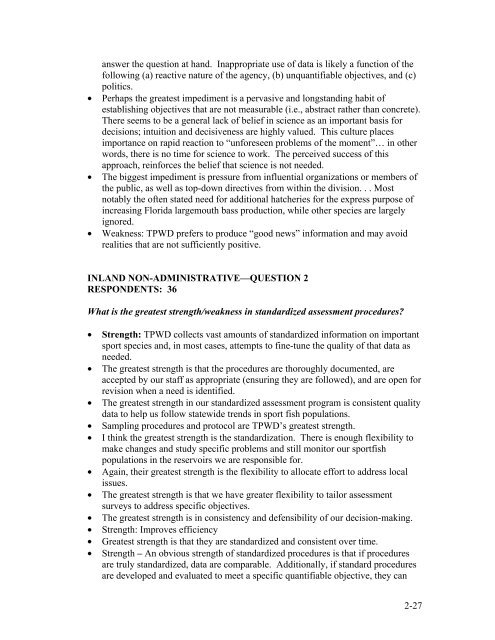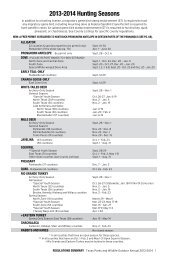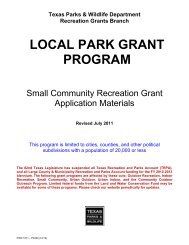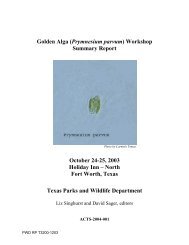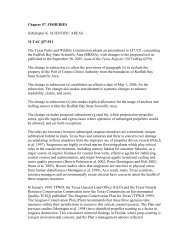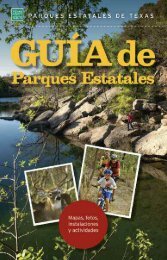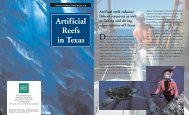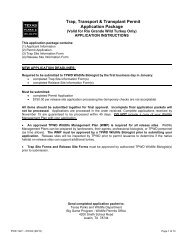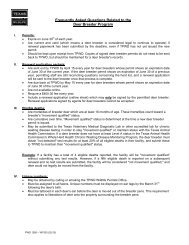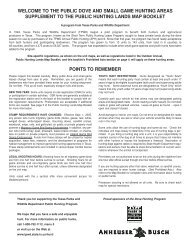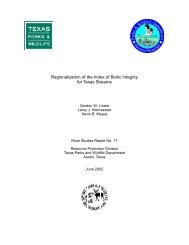1-1 Appendix 1 Responses to survey questions administered to ...
1-1 Appendix 1 Responses to survey questions administered to ...
1-1 Appendix 1 Responses to survey questions administered to ...
You also want an ePaper? Increase the reach of your titles
YUMPU automatically turns print PDFs into web optimized ePapers that Google loves.
answer the question at hand. Inappropriate use of data is likely a function of the<br />
following (a) reactive nature of the agency, (b) unquantifiable objectives, and (c)<br />
politics.<br />
• Perhaps the greatest impediment is a pervasive and longstanding habit of<br />
establishing objectives that are not measurable (i.e., abstract rather than concrete).<br />
There seems <strong>to</strong> be a general lack of belief in science as an important basis for<br />
decisions; intuition and decisiveness are highly valued. This culture places<br />
importance on rapid reaction <strong>to</strong> “unforeseen problems of the moment”… in other<br />
words, there is no time for science <strong>to</strong> work. The perceived success of this<br />
approach, reinforces the belief that science is not needed.<br />
• The biggest impediment is pressure from influential organizations or members of<br />
the public, as well as <strong>to</strong>p-down directives from within the division. . . Most<br />
notably the often stated need for additional hatcheries for the express purpose of<br />
increasing Florida largemouth bass production, while other species are largely<br />
ignored.<br />
• Weakness: TPWD prefers <strong>to</strong> produce “good news” information and may avoid<br />
realities that are not sufficiently positive.<br />
INLAND NON-ADMINISTRATIVE—QUESTION 2<br />
RESPONDENTS: 36<br />
What is the greatest strength/weakness in standardized assessment procedures?<br />
• Strength: TPWD collects vast amounts of standardized information on important<br />
sport species and, in most cases, attempts <strong>to</strong> fine-tune the quality of that data as<br />
needed.<br />
• The greatest strength is that the procedures are thoroughly documented, are<br />
accepted by our staff as appropriate (ensuring they are followed), and are open for<br />
revision when a need is identified.<br />
• The greatest strength in our standardized assessment program is consistent quality<br />
data <strong>to</strong> help us follow statewide trends in sport fish populations.<br />
• Sampling procedures and pro<strong>to</strong>col are TPWD’s greatest strength.<br />
• I think the greatest strength is the standardization. There is enough flexibility <strong>to</strong><br />
make changes and study specific problems and still moni<strong>to</strong>r our sportfish<br />
populations in the reservoirs we are responsible for.<br />
• Again, their greatest strength is the flexibility <strong>to</strong> allocate effort <strong>to</strong> address local<br />
issues.<br />
• The greatest strength is that we have greater flexibility <strong>to</strong> tailor assessment<br />
<strong>survey</strong>s <strong>to</strong> address specific objectives.<br />
• The greatest strength is in consistency and defensibility of our decision-making.<br />
• Strength: Improves efficiency<br />
• Greatest strength is that they are standardized and consistent over time.<br />
• Strength – An obvious strength of standardized procedures is that if procedures<br />
are truly standardized, data are comparable. Additionally, if standard procedures<br />
are developed and evaluated <strong>to</strong> meet a specific quantifiable objective, they can<br />
2-27


